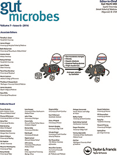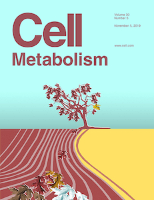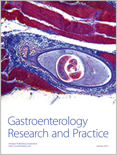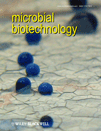
Bioscience of Microbiota Food and Health
Scope & Guideline
Innovating Research at the Crossroads of Food Science and Health
Introduction
Aims and Scopes
- Microbiota and Gut Health:
Research focused on the relationship between gut microbiota and health outcomes, exploring how microbial communities influence digestion, metabolism, and immune functions. - Probiotics and Prebiotics:
Studies on the effects of probiotics and prebiotics on gut microbiota composition and health, including clinical trials assessing their efficacy in various populations. - Food-Microbiota Interactions:
Investigations into how different food components, such as fibers and bioactive compounds, affect microbiota composition and activity, and their subsequent health implications. - Microbial Ecology and Metabolism:
Research on the ecological dynamics of gut microbiota, including metabolic profiling and the impact of microbial metabolites on host physiology. - Microbiota in Disease Mechanisms:
Exploration of the role of gut microbiota in the pathogenesis of diseases, including metabolic disorders, gastrointestinal diseases, and immune-related conditions. - Clinical and Translational Research:
Focus on clinical studies that translate microbiota research into practical applications, assessing the therapeutic potential of microbiota modulation in various health conditions.
Trending and Emerging
- Gut-Brain Axis:
An increasing number of studies explore the interactions between gut microbiota and neurological health, emphasizing the microbiota-gut-brain axis and its implications for mental health and neurological disorders. - Personalized Nutrition and Microbiome:
Research focusing on personalized nutrition strategies based on individual microbiome profiles is gaining traction, highlighting the potential for tailored dietary interventions to improve health outcomes. - Microbiota in Chronic Diseases:
There is a rising interest in the role of microbiota in chronic diseases, such as obesity, diabetes, and cardiovascular diseases, with studies linking microbiome composition to disease mechanisms. - Functional Foods and Bioactive Compounds:
Emerging research on the effects of functional foods and bioactive compounds on gut microbiota modulation and health benefits is becoming a focal point, indicating a shift towards practical applications in dietary interventions. - Advanced Omics Technologies:
The use of advanced omics technologies, including metagenomics and metabolomics, to study microbiota dynamics and their functional implications is expanding, providing deeper insights into microbiota-host interactions.
Declining or Waning
- Traditional Fermentation Processes:
Research focusing on traditional fermentation methods and their microbiota has decreased, possibly due to a growing emphasis on modern biotechnological approaches and novel fermentation techniques. - Single-Organism Studies:
There is a noticeable decline in studies centered solely on individual microbial species, as the field increasingly recognizes the importance of complex community interactions within the microbiome. - Basic Microbial Characterization:
The prevalence of studies that focus solely on characterizing microbial species without linking them to health outcomes or functional implications has diminished, as more integrative approaches are favored. - Historical Dietary Studies:
Research examining historical dietary patterns and their microbiota effects appears less common, likely overshadowed by contemporary studies that address current dietary impacts and health challenges.
Similar Journals

Microorganisms
Unveiling the mysteries of microbial life.Microorganisms is a leading open-access journal published by MDPI based in Switzerland, catering specifically to the rapidly evolving fields of microbiology and virology. Since its inception in 2013, the journal aims to foster the dissemination of high-quality research through its comprehensive and interdisciplinary platform, with a particular focus on both fundamental and applied microbiological sciences. Contributing to its esteemed reputation, Microorganisms holds a commendable Q2 ranking in the categories of Microbiology and Virology, as well as in Medical Microbiology, highlighting its significance in the academic community. With a consistent impact, evidenced by its rankings in Scopus—such as rank #25 in Virology and #56 in Microbiology—the journal serves as an invaluable resource for researchers, professionals, and students looking to stay at the forefront of microbiological research. As an open-access journal, Microorganisms ensures that vital research findings are readily available to a global audience, promoting collaboration and innovation in the study of microbial life and its implications for health and disease.

Malaysian Journal of Microbiology
Championing Innovation in Microbiology and BiotechnologyMalaysian Journal of Microbiology is a prestigious open-access journal dedicated to advancing the field of microbiology, published by the Malaysian Society for Microbiology. Since its inception in 2005, this journal has become an essential platform for researchers and practitioners, facilitating the dissemination of innovative studies in applied microbiology, biotechnology, and infectious diseases. Based in Penang, Malaysia, this journal not only focuses on local microbiological research but also positions itself within the broader global scientific community. Although currently placed in the Q4 category in several relevant fields—including Applied Microbiology and Biotechnology, Infectious Diseases, and Medical Microbiology according to the 2023 Scopus rankings—it plays a crucial role in encouraging novel research and fostering collaboration among scientists. The journal encourages submissions that contribute to the understanding of microbial processes, disease mechanisms, and novel biotechnological applications, thereby supporting the continuous growth of knowledge in microbiology. With open access since its launch, the Malaysian Journal of Microbiology ensures that all published works are freely available to the public, enhancing their visibility and impact within the scientific community.

Gut Microbes
Elevating the Discourse on Gut MicrobiotaGut Microbes, published by TAYLOR & FRANCIS INC, stands as a leading academic journal in the fields of Gastroenterology, Infectious Diseases, and Microbiology, with a distinguished Q1 ranking in all relevant categories for 2023. With an ISSN of 1949-0976 and an E-ISSN of 1949-0984, this journal has been at the forefront of microbiome research since its inception in 2010 and continues to provide an essential platform for the dissemination of groundbreaking studies and reviews related to gut microbiota and health. Researchers and professionals benefit from an impressive impact factor, underlining the journal's commitment to high-quality peer-reviewed articles that push the boundaries of our understanding of microbial interactions and their implications in various medical contexts. While it operates under a traditional subscription model, the journal ensures that its content remains accessible to the global scientific community through institutional access programs. As we look ahead to converging years until 2024, Gut Microbes remains a pivotal resource for those seeking to explore the intricate connections between the gut microbiome, health, and disease.

EUROPEAN JOURNAL OF NUTRITION
Connecting Researchers to Revolutionize NutritionEuropean Journal of Nutrition, published by Springer Heidelberg, is a premier outlet for groundbreaking research in the field of nutrition and dietetics. Established in 1996 and set to continue its impactful legacy until at least 2024, this journal enjoys an impressive recognition, holding a Q1 category rank in both Medicine (miscellaneous) and Nutrition and Dietetics, with notable Scopus rankings that place it in the top 10% of its field. The journal facilitates open access options, enhancing the dissemination of knowledge across the globe. It serves as a vital platform for researchers, healthcare professionals, and students, promoting the exchange of innovative ideas and advancements in nutritional science that aim to improve health outcomes worldwide. With a commitment to quality and relevance, the European Journal of Nutrition continues to shape the future of nutrition research and practice.

Cell Metabolism
Exploring the frontiers of cellular energy.Cell Metabolism is an esteemed journal published by CELL PRESS, dedicated to advancing the understanding of metabolic processes within cell biology, molecular biology, and physiology. With an impactful 2023 ranking placing it at Q1 in multiple categories and earning a distinguished position in the top percentiles of its respective fields, this journal serves as an essential resource for researchers, professionals, and students who are investigating the dynamic roles of metabolism in health and disease. Its rigorous peer-review process ensures high-quality publications that reflect the latest advancements in metabolic research. Since its inception in 2005, Cell Metabolism has become a pivotal platform for disseminating critical findings that not only expand scientific knowledge but also foster innovative approaches to tackle metabolic disorders. By prioritizing accessibility and scholarly excellence without the Open Access model, it remains a premier source for cutting-edge research insights.

Food Science and Human Wellness
Elevating Research for a Healthier TomorrowFood Science and Human Wellness, published by TSINGHUA UNIVERSITY PRESS, is an esteemed open-access journal that has been at the forefront of advancing research in the interdisciplinary fields of food science and human health since its inception in 2012. With an impressive impact factor indicative of its quality and relevance, this journal holds a prestigious Q1 ranking in Food Science according to 2023 metrics, reflecting its commitment to high-caliber research and innovation. The journal is positioned within the top 12% of its category, ranked 46th out of 389 in Agricultural and Biological Sciences. The journal not only publishes original research articles but also critical reviews, perspectives, and innovations that contribute significantly to our understanding of the relationship between nutrition, wellness, and food science. With its Open Access model, Food Science and Human Wellness ensures that its valuable content is available to a global audience, fostering collaborative advancements in this vital field. Researchers, professionals, and students are invited to explore insightful discussions and impactful studies that aim to enhance public health and food safety.

Gastroenterology Research and Practice
Bridging Research and Practice in GastroenterologyGastroenterology Research and Practice is a leading Open Access journal dedicated to advancing the field of gastroenterology and hepatology. Published by HINDAWI LTD, this journal offers a platform for researchers, clinicians, and healthcare professionals to share their findings and insights on cutting-edge topics in digestive health. With an ISSN of 1687-6121 and an E-ISSN of 1687-630X, it has established its significance within the academic community, evidenced by its ranking in the 2023 Scopus metrics, where it is positioned in the third quartile for both gastroenterology and hepatology disciplines. The journal is recognized for disseminating high-quality, peer-reviewed articles that contribute to the understanding of gastrointestinal disorders, therapeutic advancements, and innovative practices. Since its inception as an Open Access journal in 2008, Gastroenterology Research and Practice has removed barriers to access, ensuring that vital research reaches a global audience. This ongoing commitment to increasing accessibility, alongside its continuous publication from 2009 to 2024, underscores its importance as a resource for the academic and clinical communities striving to improve patient outcomes in digestive diseases.

Microbial Biotechnology
Pioneering breakthroughs in applied microbiology and biotechnology.Microbial Biotechnology, published by WILEY, stands at the forefront of innovation in the field of applied microbiology and biotechnology, showcasing cutting-edge research and advancements within both academic and industrial contexts. As an Open Access journal since 2012, it ensures that high-quality research is easily accessible to researchers, professionals, and students globally, promoting knowledge sharing and collaboration. With an impressive impact, the journal holds a Q1 ranking in its categories—Applied Microbiology and Biotechnology, Biochemistry, Bioengineering, and Biotechnology—demonstrating its significance in the scientific community. The journal currently boasts a strong Scopus ranking in several relevant disciplines, including a top 10% position in Applied Microbiology and Biotechnology, highlighting its critical role in disseminating influential findings. Designed to foster dialogue and advance technology within the microbial sciences, Microbial Biotechnology is an essential resource for anyone committed to leveraging microbial processes for sustainable and innovative solutions.

Gut Pathogens
Pioneering Research at the Intersection of Microbiology and GastroenterologyGut Pathogens, published by BMC in the United Kingdom, is a premier open-access journal focusing on the intersection of gut health and infectious diseases. With its impact firmly established since its inception in 2009, the journal has earned impressive rankings, including Q1 in renowned categories such as Gastroenterology, Infectious Diseases, Microbiology, and Parasitology, while maintaining a strong presence in Virology. The journal serves as a vital resource for researchers, professionals, and students interested in the intricate relationships between gut microbiota and pathogenic organisms, offering insights that drive advancements in treatment and prevention strategies. By providing unrestricted access to high-quality research, Gut Pathogens fosters a collaborative environment, encouraging the dissemination of knowledge and innovation within the field. The journal publishes original research, reviews, and case studies, all designed to address contemporary challenges in gut health, ultimately aiming to improve patient outcomes and public health worldwide.

JOURNAL OF MICROBIOLOGY
Unveiling the mysteries of microbes for health and industry.JOURNAL OF MICROBIOLOGY, published by the Microbiological Society Korea, is a prestigious peer-reviewed journal dedicated to the advancement of knowledge in the fields of microbiology, applied microbiology, and biotechnology. Established in 1996, this journal serves as a vital platform for researchers and professionals from around the globe to disseminate their findings and engage in multidisciplinary discussions pertaining to microbial sciences. With an H-index that reflects its impact, the journal holds a commendable Q2 ranking in key categories including Applied Microbiology and Biotechnology, as well as Medicine (Miscellaneous), which underscores its significance in the academic community. Despite being a subscription-based journal, the JOURNAL OF MICROBIOLOGY aims to contribute to the understanding of microbial processes and their applications, facilitating advancements that are essential in health, industry, and environmental sciences. Researchers, students, and practitioners are encouraged to explore this rich resource for the latest research and trends in microbiology.